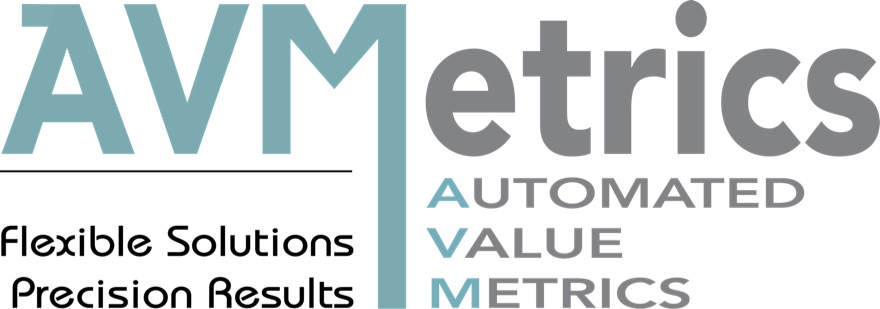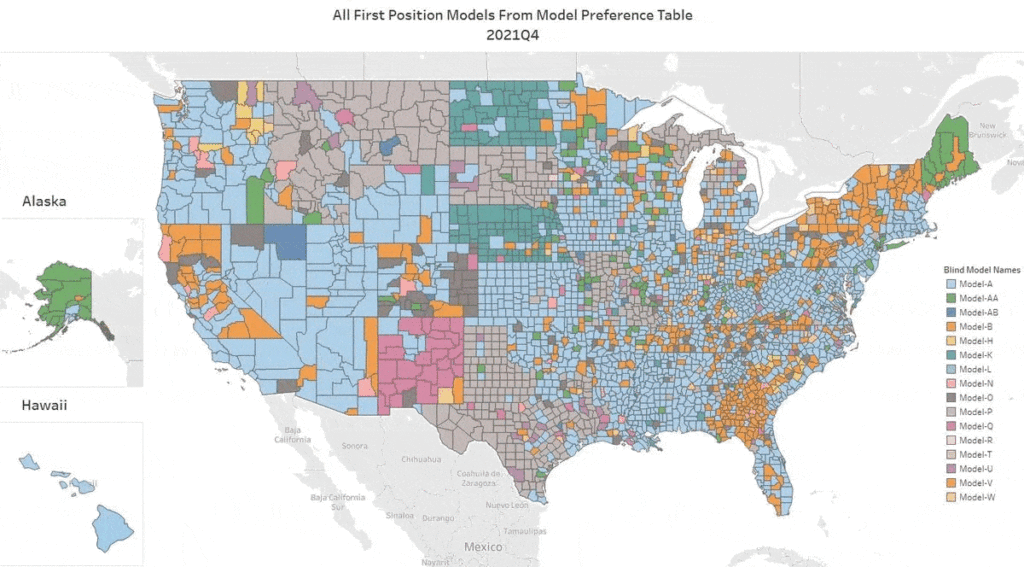Every quarter we analyze all the top AVMs and compile the results. Click on this GIF to see the top AVM in each county for each quarter. As you watch the quarters change, you can see that the colors representing the top honors change frequently.

The main point is how frequently AVM performance changes. That should be no surprise, since market conditions change and AVM’s have different strengths and tendencies. Phoenix has more tract housing, and some AVMs are optimized for that. Cities in the northeast have more row housing, and some models are better there. But AVMs also change – a lot. Whole new models are introduced, but every model is constantly being improved as builders add new data feeds and use new techniques to get better results (with respect to new techniques, over at the AVMNews, we curate articles about AVMs, and we highlight several hundred new research articles about AVMs every year).
Q4 Change Highlights
As ever, if you watch a part of the map, you’ll see several changes. But, in Q3, as markets stabilized at higher interest rate levels, we saw a changing of the guard. Here are some places to watch:
- On the the west coast, leadership changed in Los Angeles County and Seattle’s King County.
- Most of the counties of Atlanta, GA changed, as did the main counties of Charlotte, NC.
- Some less-populated areas had almost wholesale changes, such as Idaho, the Dakotas, Montana, Colorado, Iowa and rural Michigan (but not New Mexico or Utah).
Takeaways
- Things change – a lot. Don’t rely on the results from last year or earlier this year. Heck, you can’t even trust last quarter! We compile these results quarterly, but our testing is non-stop, and we can produce new optimizations monthly based on a rolling 3 months or any other time period. Often, 3 months’ of data are required to get a large enough sample in smaller regions, but we can slice it every way imaginable.
- Use more than one AVM. It’s not obvious from a map showing just one AVM in each county, but if you think about what’s going on to produce these results, you’ll realize that AVMs have different strengths and there are a lot of them climbing all over each other to get to the top of the ranking. So, when you’re valuing a particular property, you just don’t know if it will be a good candidate for even the best AVM. When that AVM produces a result with low confidence, there’s a very good chance that another AVM will produce a reasonable estimate. Why not be able to take three, four or five bites at the apple?





